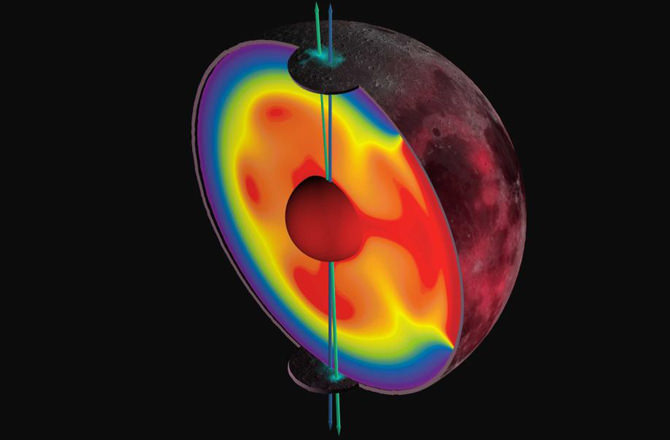It’s tempting to think that the Moon never changes. You can spend your whole life looking at it, and see no evidence of change whatsoever. In fact, the ancients thought the whole Universe was unchanging.
You may have heard of a man named Aristotle. He thought the Universe was eternal and unchanging. Obviously, with our knowledge of the Big Bang, stellar evolution, and planetary formation, we know better. Still, the placid and unchanging face of the Moon can tempt us into thinking astronomers are making up all this evolving universe stuff.
But now, according to a new paper in Nature, the Moon’s axis of rotation is different now than it was billions of years ago. Not only that, but volcanoes may been responsible for it. Volcanoes! On our placid little Moon.
The clue to this lunar True Polar Wander (TPW) is in the water ice locked in the shadows of craters on the Moon. When hydrogen was discovered on the surface of the Moon in the 1990s by the Lunar Prospector probe, scientists suspected that they would eventually find water ice. Subsequent missions proved the presence of water ice, especially in craters near the polar regions. But the distribution of that water-ice wasn’t uniform.
You would expect to see ice uniformly distributed in the shadows of craters in the polar regions, but that’s not what scientists have found. Instead, some craters had no evidence of ice at all, which led the team behind this paper to conclude that these ice-free craters must have been exposed to the Sun at some point. What else would explain it?
The way that the ice in these craters is distributed forms two trails that lead away from each pole. They’re mirror images of each other, but they don’t conform with the Moon’s current axis of rotation, which is what led the team to conclude that the Moon underwent a 6 degree TPW billions of years ago.
The paper also highlights the age of the water on the Moon. Since the TPW, and the melting of some of the ice as a result of it, occurred some billions of years ago, then the water ice that is still frozen in the shadows of some of the Moon’s craters must be ancient. According to the paper, its existence records the “early delivery of water to the inner Solar System.” Hopefully, a future mission will return a sample of this ancient water for detailed study.
But even more interesting than the age of the ice in the craters and the TPW, to me anyways, is what is purported to have caused it. The team behind the paper reports that volcanic activity on the Moon in the Procellarum region, which was most active in the early history of the Moon, moved a substantial amount of material and “altered the density structure of the Moon.” This alteration would have changed the moments of inertia on the Moon, resulting in a TPW.
It’s strange to think of the Moon with volcanic activity viewable from Earth. I wonder what effect visible lunar volcanoes would have had on thinkers like Aristotle, if lunar volcanic activity had occurred during recorded history, rather than ending one billion years ago or so.
We know that events like eclipses and comets caused great confusion and sometimes upheaval in ancient civilizations. Would lunar volcanoes have had the same effect?

